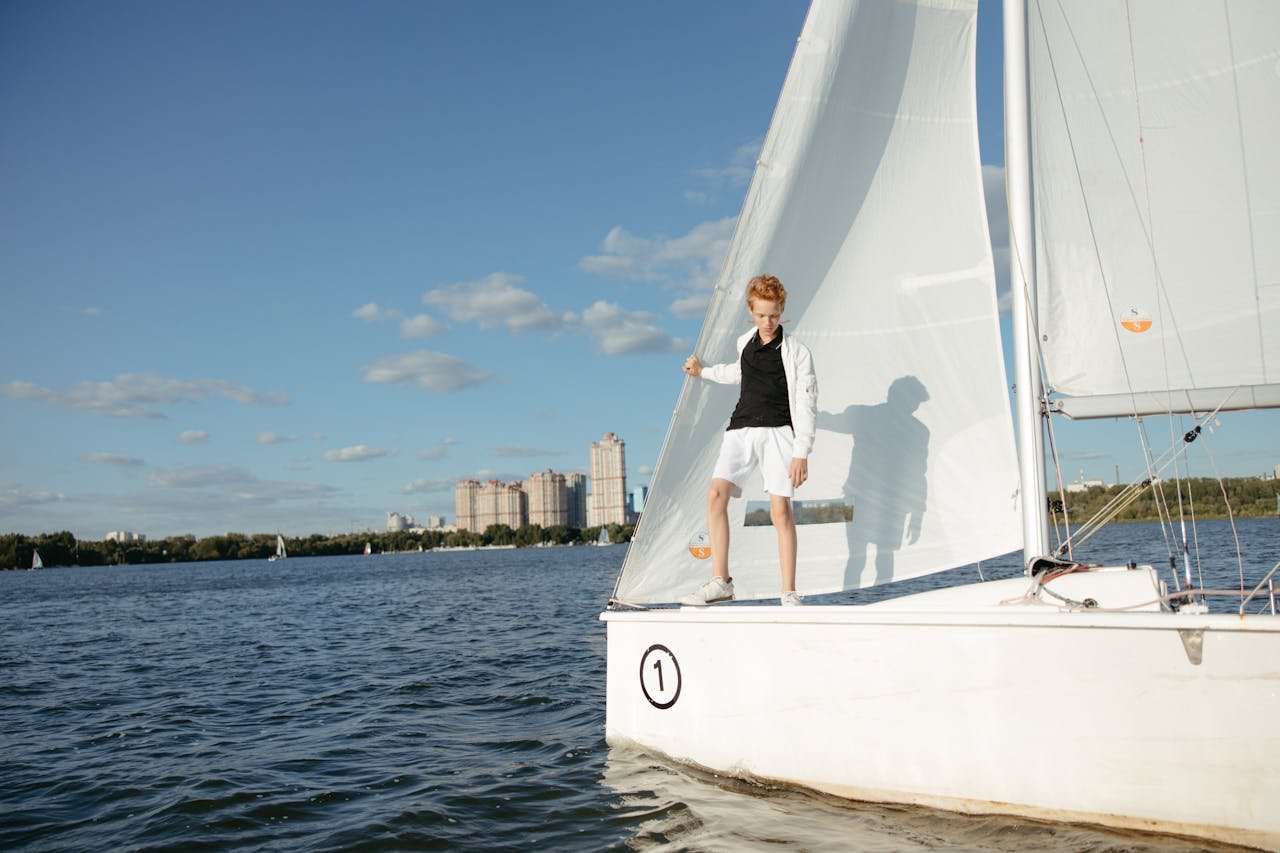Sailing is not merely a sport—it’s a dialogue with nature, where the wind becomes your engine and the waves your compass. As Joshua Slocum, the first solo circumnavigator, wrote in Sailing Alone Around the World, “A ship in port is safe, but that is not what ships are built for.” This guide distills timeless maritime wisdom into actionable steps, inspired by The Art of Seamanship by John Rousmaniere—a definitive text praised for its blend of technical rigor and poetic insight. Whether you’re stepping onto a boat for the first time or refining your skills, this roadmap will transform you into a confident sailor.
1. Foundations of Sailing: Terminology & Vessel Anatomy
Before setting sail, acquaint yourself with these essential terms and components:
Key Vessel Components
- Hull: The boat’s body, constructed from fiberglass (lightweight), wood (traditional), or carbon fiber (high-performance).
- Keel/Centerboard: A weighted fin (keel) or retractable plate (centerboard) to prevent sideways drift.
- Mast & Boom: The mast supports sails; the boom controls the mainsail’s bottom edge.
- Sails:
- Mainsail: Largest sail, attached to the mast and boom.
- Jib/Genoa: Forward sail for upwind efficiency.
- Spinnaker: Lightweight sail for downwind speed.
- Rigging:
- Shrouds/Stays: Cables stabilizing the mast.
- Halyards: Lines to raise sails.
- Sheets: Lines to trim sails.
Core Navigation Terms
- Port/Starboard: Left/right when facing the bow.
- Tacking/Jibing: Maneuvers to change direction: tacking turns into the wind, jibing turns away.
- Windward/Leeward: Upwind/downwind directions.
- Point of Sail: Angles relative to the wind (e.g., close-hauled, beam reach).
2. Boat Types: From Dinghies to Multihulls
Sailboats are classified by design, material, and purpose:
Hull Design
- Monohulls:
- Displacement: Stable for cruising (e.g., sloops, cutters).
- Planing: Shallow draft for racing (e.g., Laser).
- Multihulls:
- Catamarans: Two hulls for stability and speed (e.g., Nacra 17).
- Trimarans: Three hulls for efficiency (e.g., Vendée Globe racers).
Materials
- Fiberglass: Durable and low-maintenance.
- Carbon Fiber: Lightweight for high-performance racing.
- Wood: Classic, requiring regular care.
Function
- Coastal Cruisers: Comfortable for short trips (e.g., Beneteau Oceanis).
- Offshore Yachts: Built for long-distance voyages (e.g., Hylas 49).
- Racing Boats: Lightweight designs like Moths with hydrofoils.
3. Gear & Safety: Your Lifeline at Sea
Essential Attire
- Life Jacket: Mandatory for all passengers. Choose inflatable models for comfort.
- Non-Slip Footwear: Protect against falls (e.g., Xtratuf boots).
- Gloves: Prevent rope burns and improve grip.
- Sun Protection: UV-resistant clothing, hat, and sunscreen.
Safety Equipment
- VHF Radio: For emergency calls (channel 16).
- First Aid Kit: Include seasickness medication and burn ointment.
- Anchor & Rode: Sufficient length for water depth + 3x the boat’s length.
4. On-Water Mastery: Skills for Every Sailor
Pre-Departure Checklist
- Weather Check: Use apps like PredictWind for forecasts.
- Rigging Inspection: Ensure halyards, sheets, and knots are secure.
- Float Plan: Share your route and ETA with shore.
Basic Maneuvers
- Tacking:
- Announce “Ready about!”
- Turn bow into wind, release old sheet, trim new sheet.
- Jibing:
- Announce “Prepare to jibe!”
- Turn stern through wind, control boom swing.
Advanced Skills
- Reefing: Shorten sails in strong winds to reduce heeling.
- Capsize Recovery: Practice righting the boat with crew weight and sail manipulation.
5. Learning Resources & Mindset
- Books:
- The Complete Sailor by David Seidman (comprehensive reference).
- Sailing for Dummies (accessible guide for beginners).
- Courses:
- ASA (American Sailing Association) or RYA (Royal Yachting Association) Certified courses.
- Mindset:
- Embrace lifelong learning—every voyage teaches new lessons.
- Prioritize safety: “There are old sailors and bold sailors, but no old bold sailors.”
Final Takeaway
Sailing is a journey of humility and discovery. As you hoist your first sail, remember: the sea rewards preparation, patience, and respect. With this guide, you’re not just learning to sail—you’re joining a legacy of explorers who’ve turned wind into wings.

